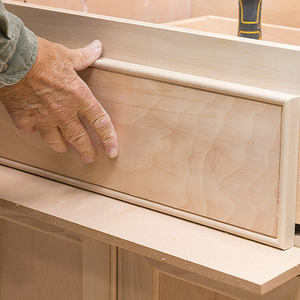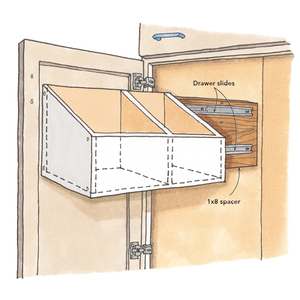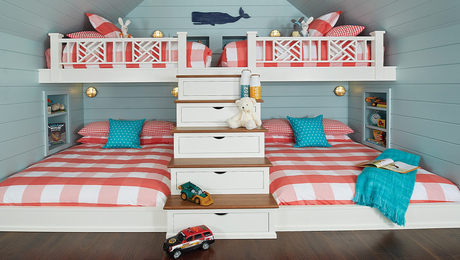Solid Fastening for Kitchen Cabinets
Avoid the danger of long screws, but make sure they are long enough. A studfinder may be part of the answer.

When you’re installing cabinets, it seems like 2-1/2-in. to 3-in. screws are recommended. With fasteners this long, how do you avoid hitting pipes and electrical? I’m inclined to play it safe and use screws that only penetrate the framing 1 in. Is that adequate for upper cabinets?
—Levi H., via email
Editorial advisor Mike Guertin: Any pipes or wires that cross through a stud and are less than 1-1/2 in. from the stud face are supposed to have metal nail guards to protect them, according to modern code. So if the wall is covered with 1/2-in. drywall and the mounting rail of the cabinet is 3/4 in., then you should have 2-3/4 in. of clearance before reaching any unguarded pipes or wires running through studs. Though there is no code regarding how deep screws must penetrate studs when hanging cabinets, I’d prefer to see deeper penetration than 1 in. I usually use 2-1/2-in. to 2-3/4-in. screws rather than 3-in. screws to be on the safe side. 2-3/4-in. screws would penetrate about 1-1/2 in. into the stud, so should be safe.
Even with shorter screws, you could still have problems, especially in older homes where pipes and wires may be closer to the stud surface and may not have nail guards. Homes built before, say, the year 2000 may not have nail guards. And pipes that run vertically through a stud bay will only have guards at the top and bottom plates, so are vulnerable to screws. Often stud finders will identify a large-diameter pipe that is close to the back of the drywall, and without opening up the wall you won’t know unless you look. So, a shorter screw—one that would only penetrate 1 in. into the wall—could still puncture the pipe. I have opened up walls on remodeling jobs and found drywall screws driven neatly in a line up a PVC drain pipe.
To be on the safe side when working in an older house—and even in the case of a newer home where you may suspect vertical pipes—I recommend opening up a view strip in the drywall and using a mirror or snake camera to look up and down to identify any HVAC line sets and plumbing pipes running vertically, and you can check for wires, too. Many older homes don’t have solid blocking for mounting cabinets, so the view strip can pull double duty and let you install some. The drywall can be patched in without going to the same level of finish as the rest of the walls, since it will be covered with cabinets. I’ve also replaced the exposed drywall strip with plywood over newly installed wood blocking to provide more secure mounting for cabinets.





























